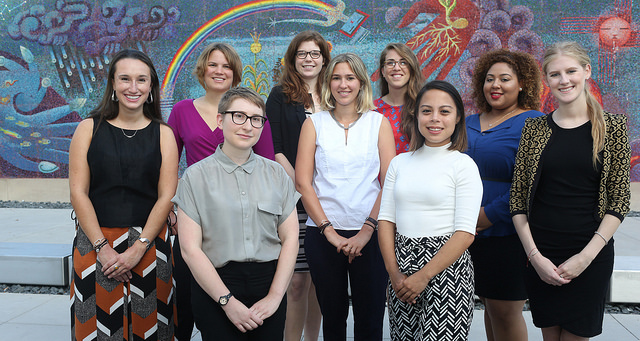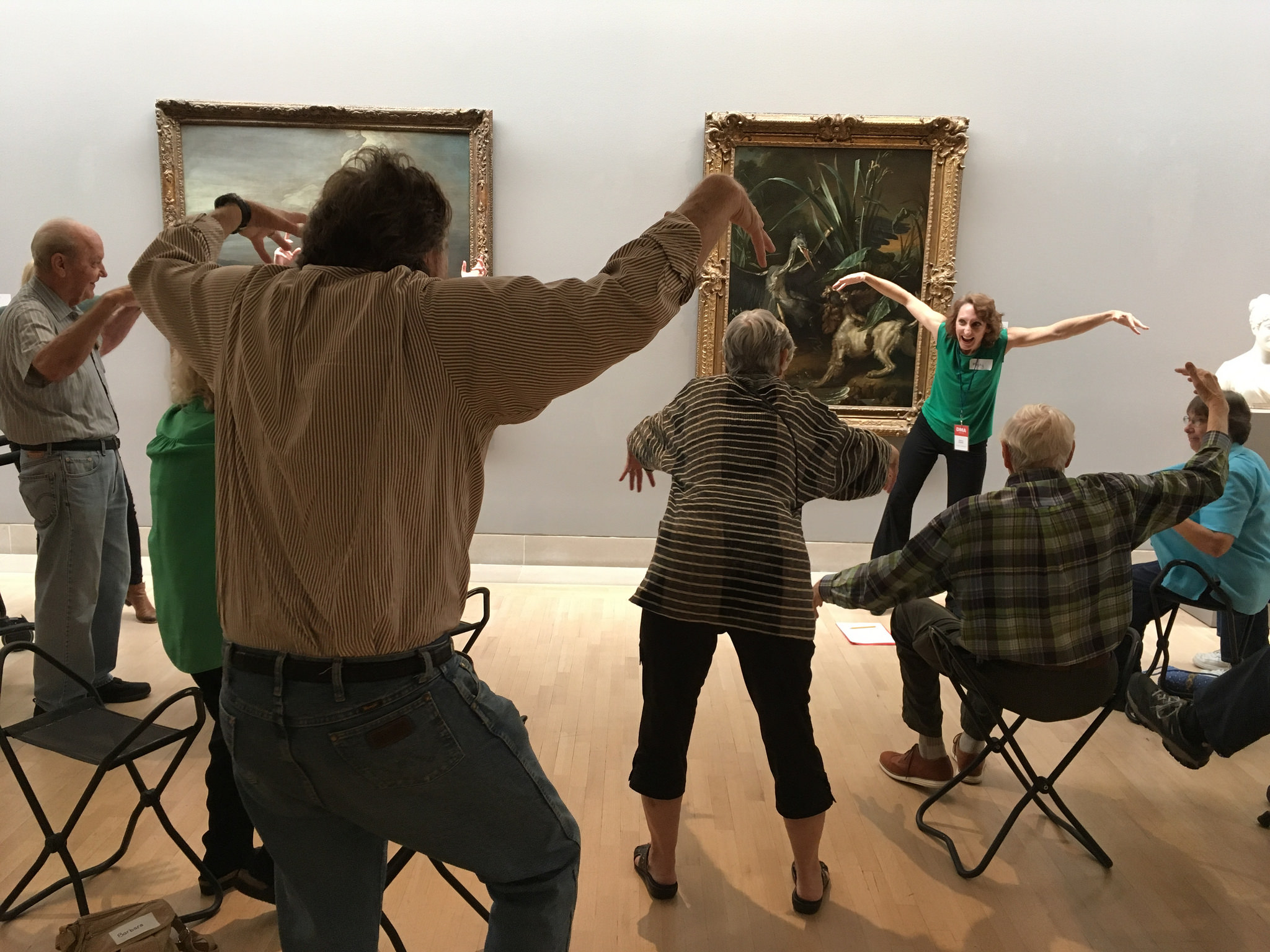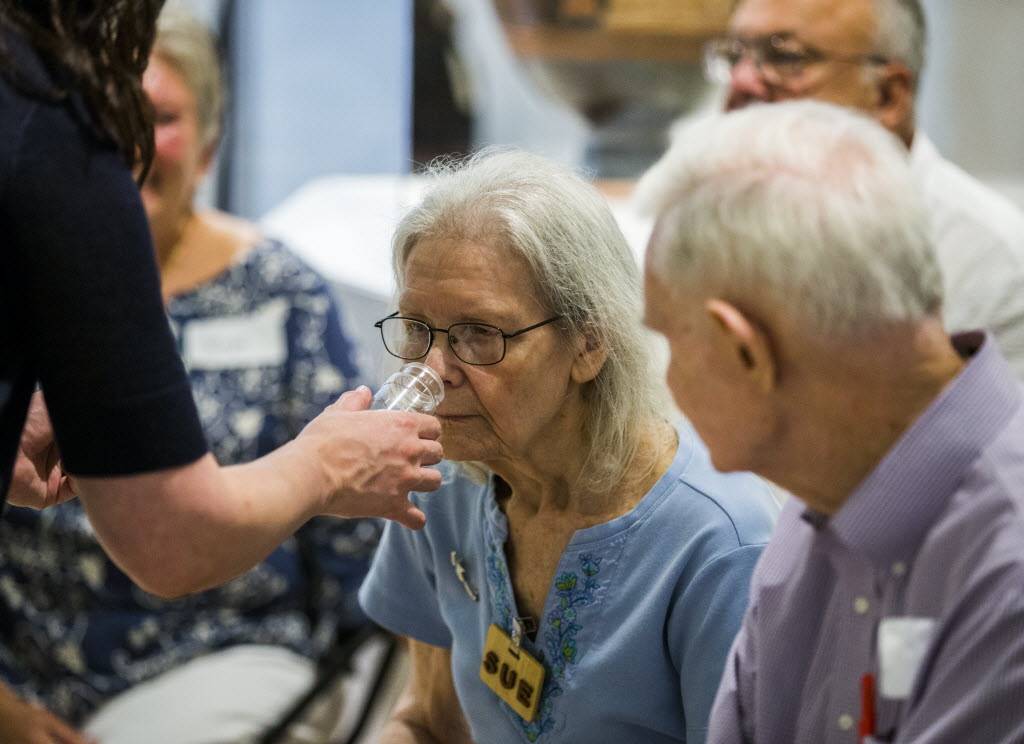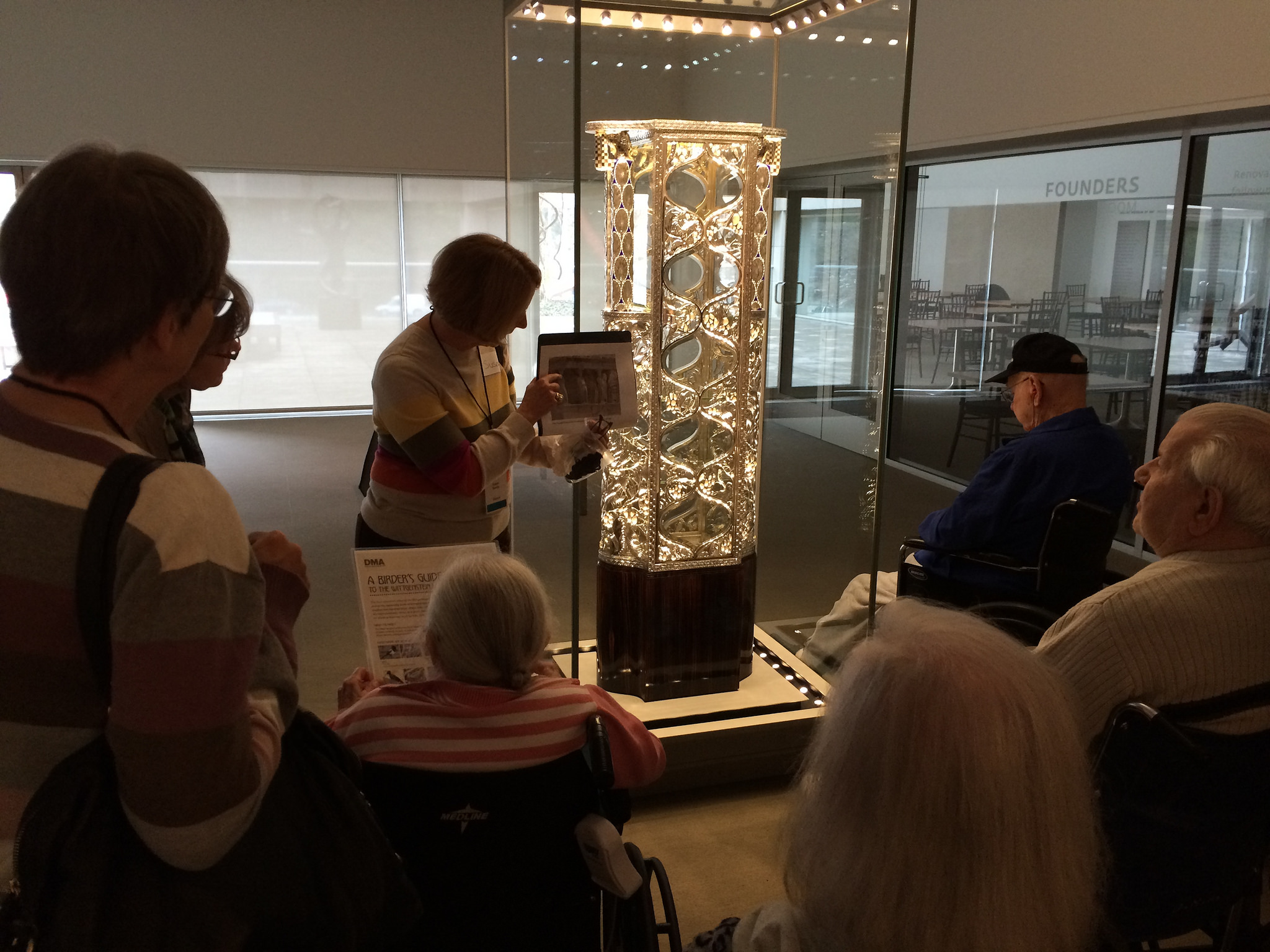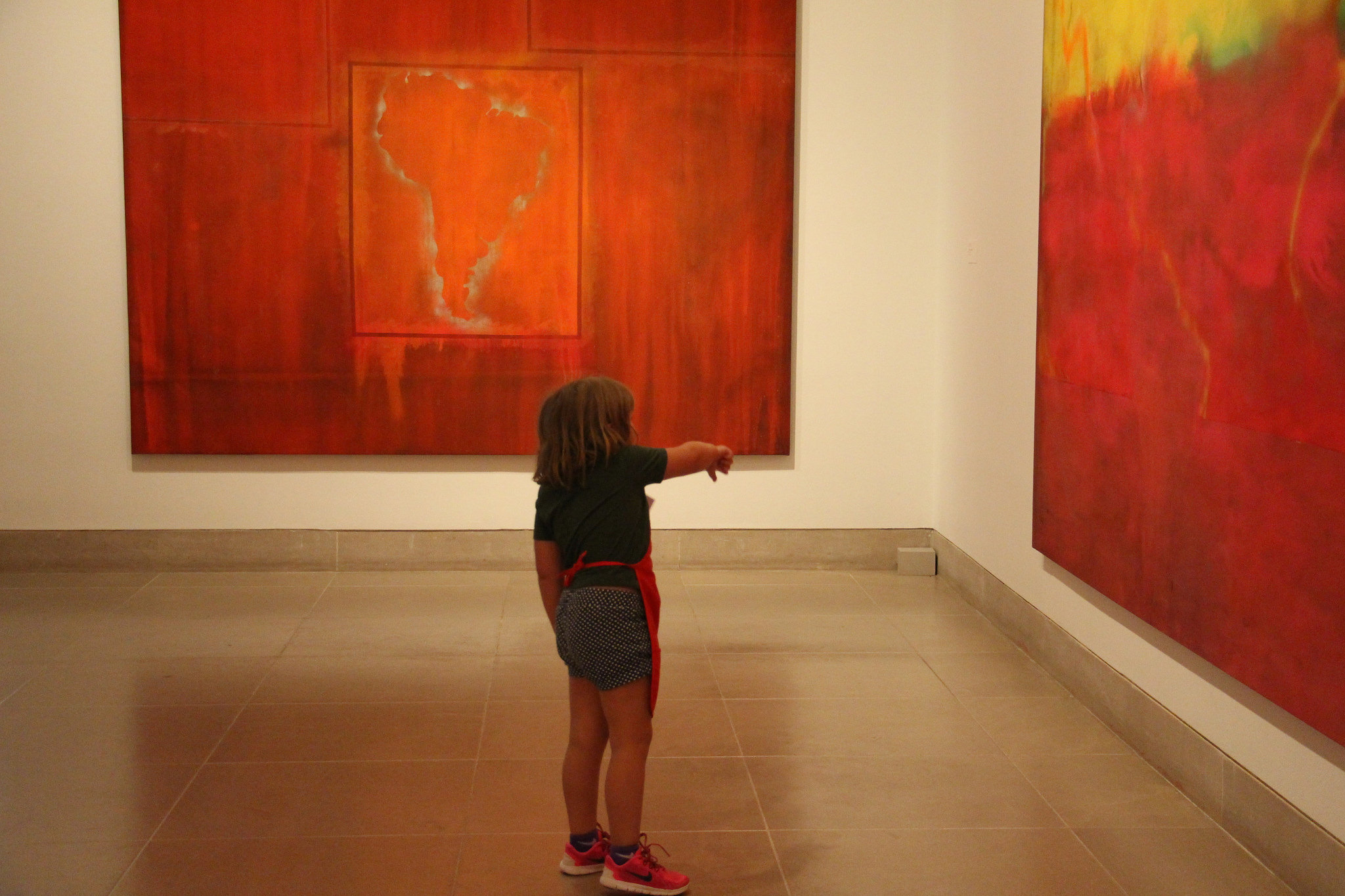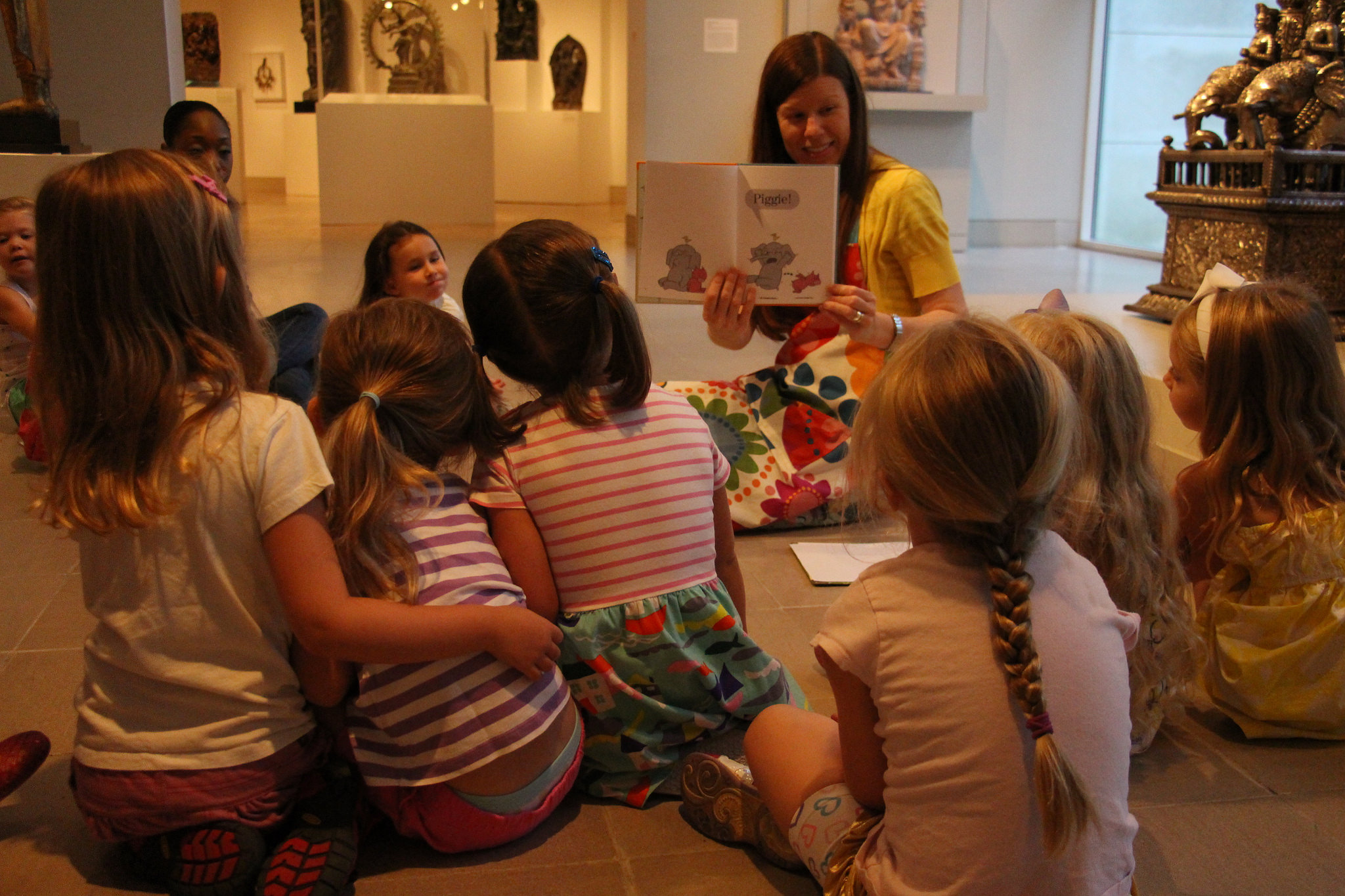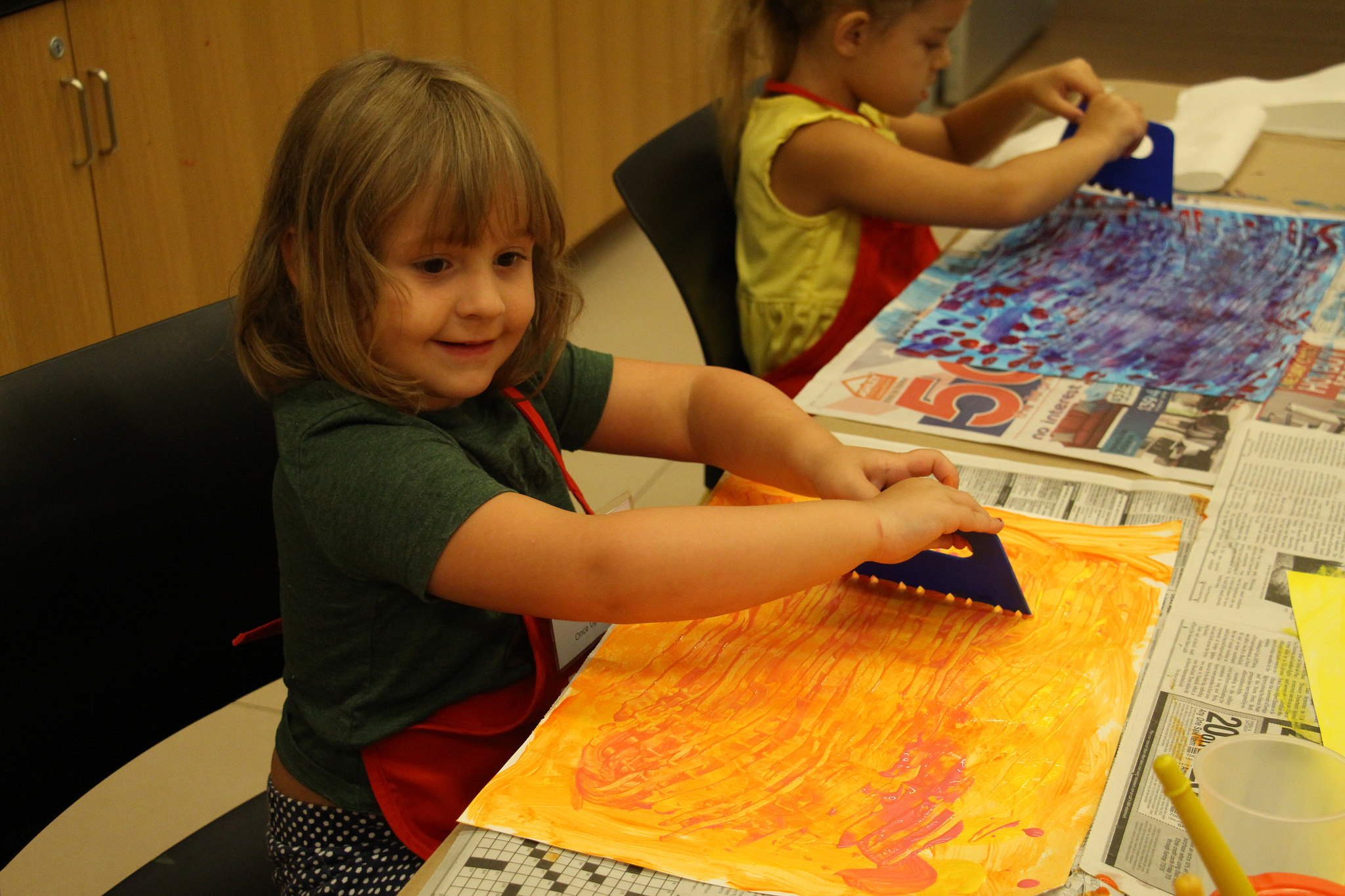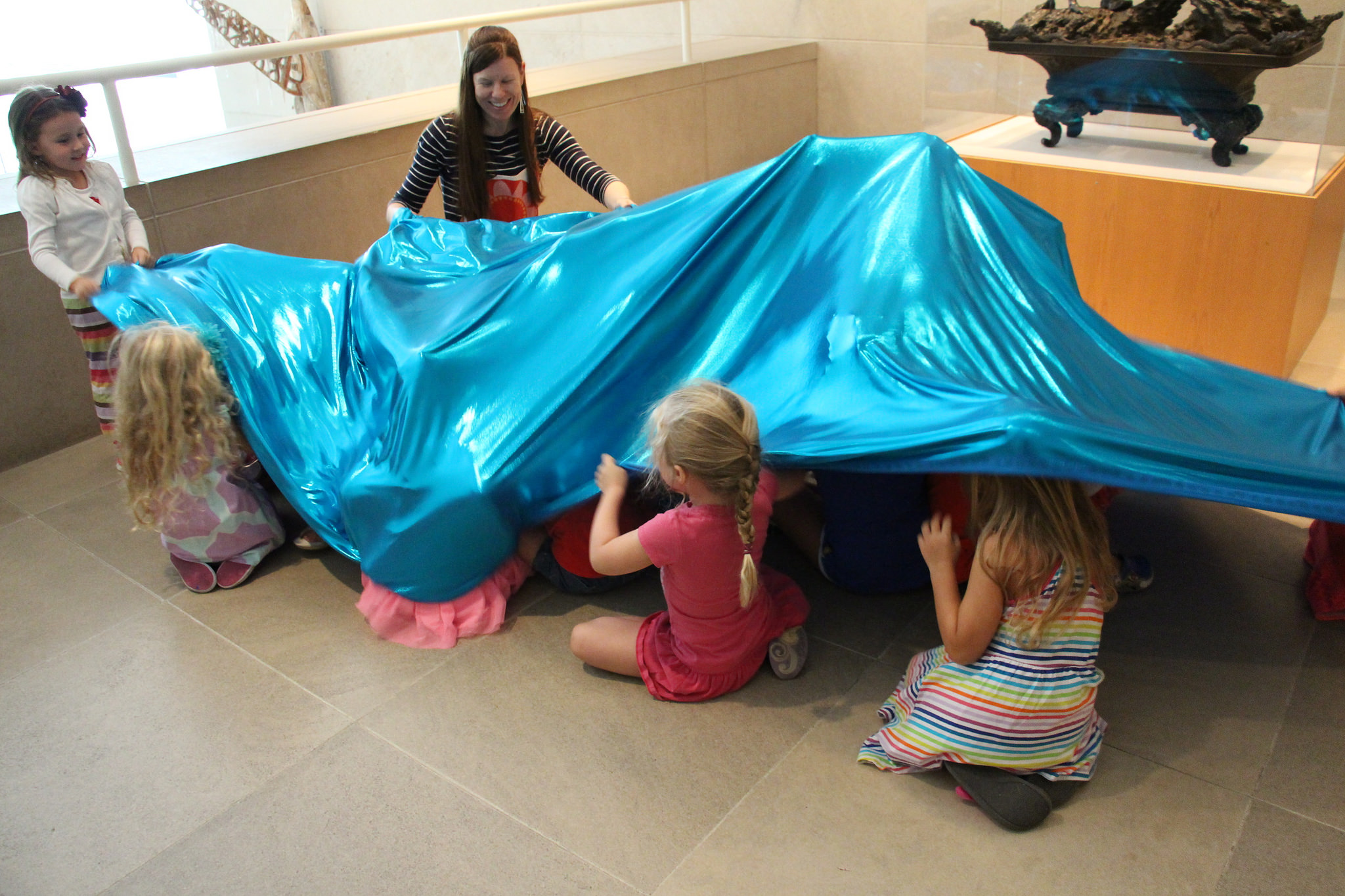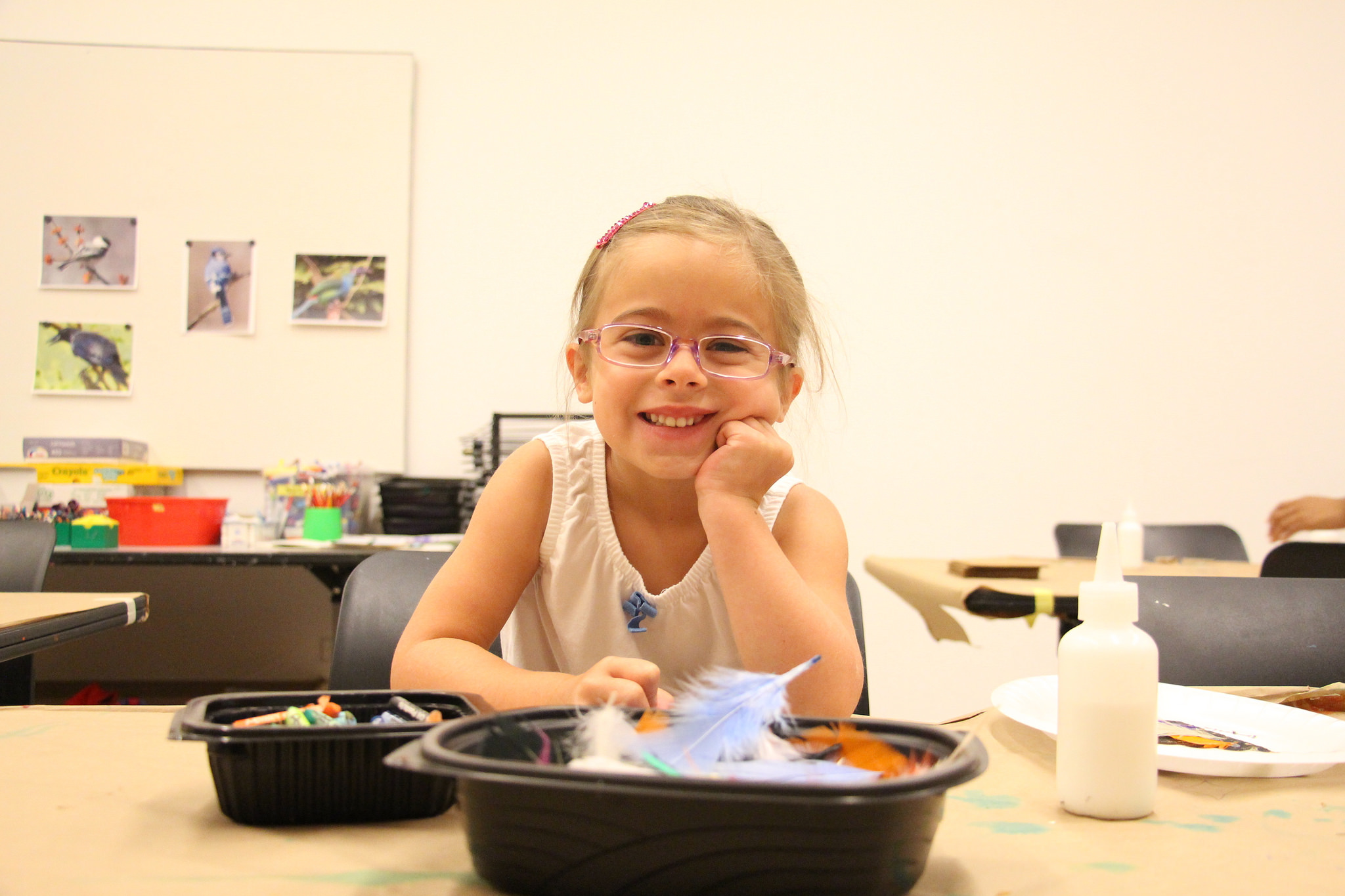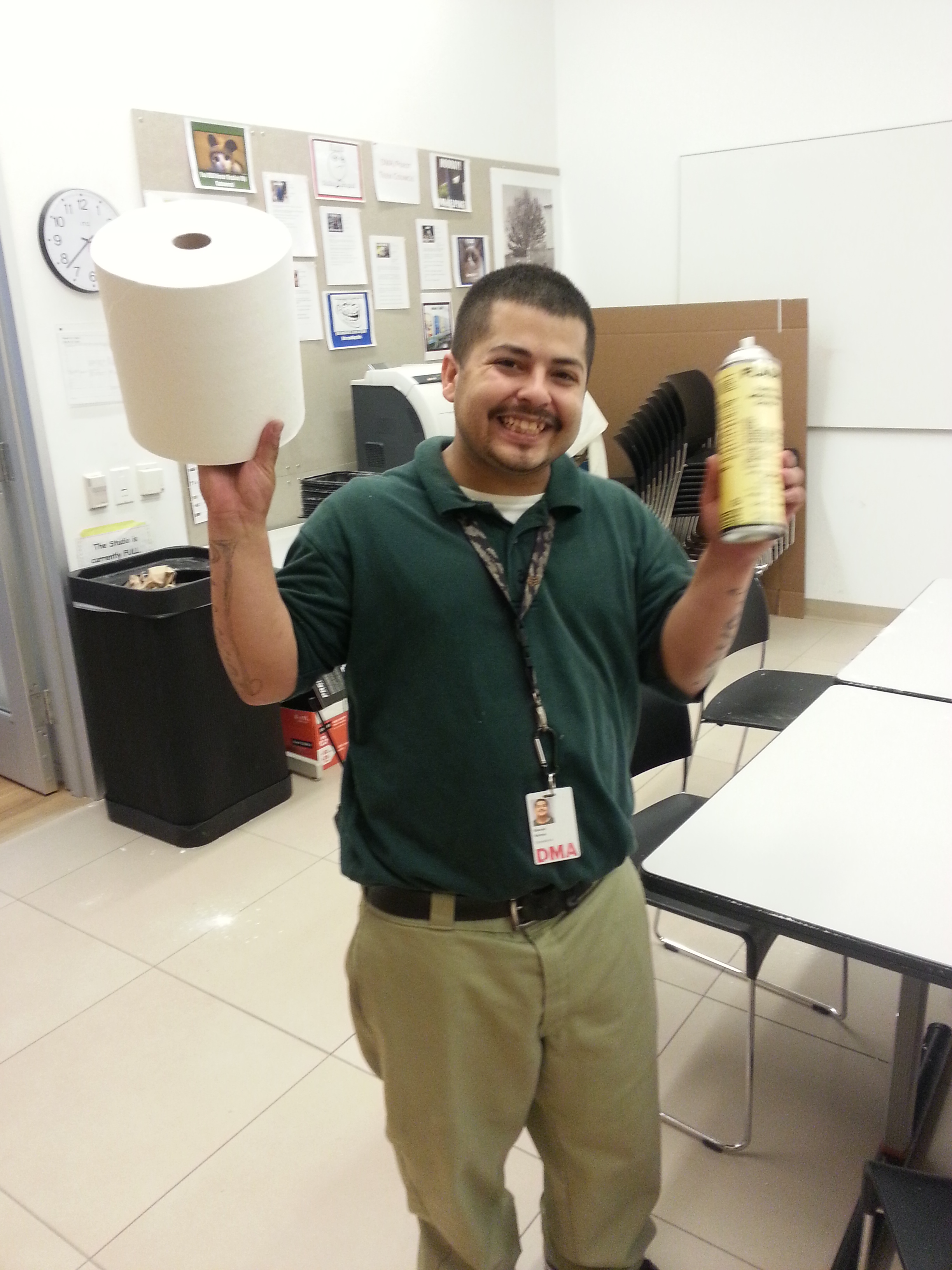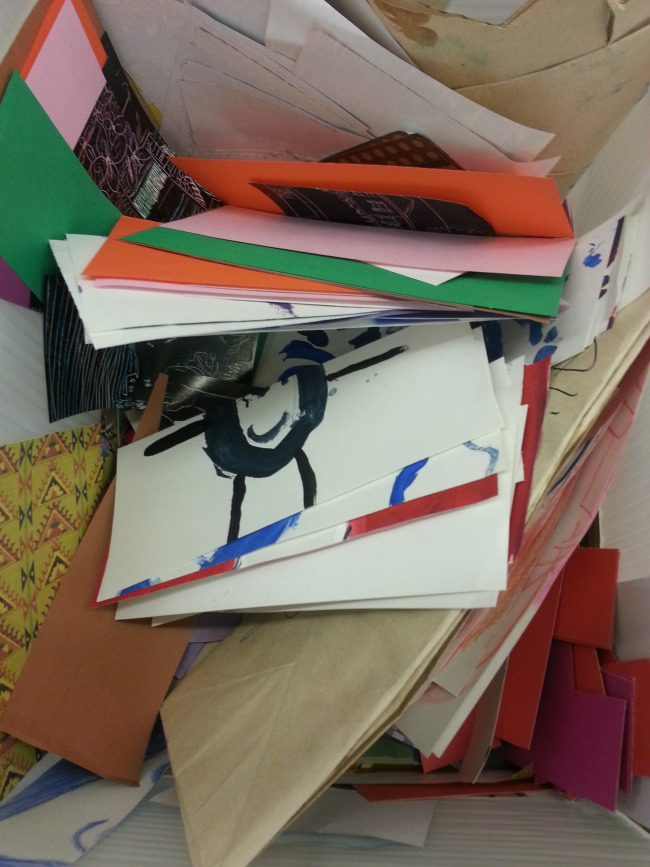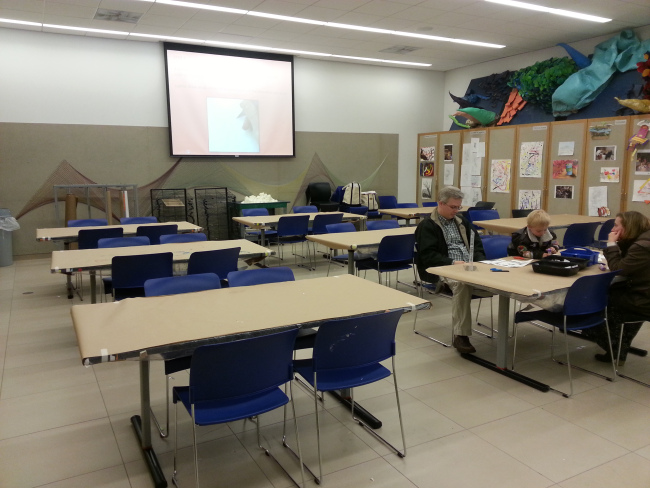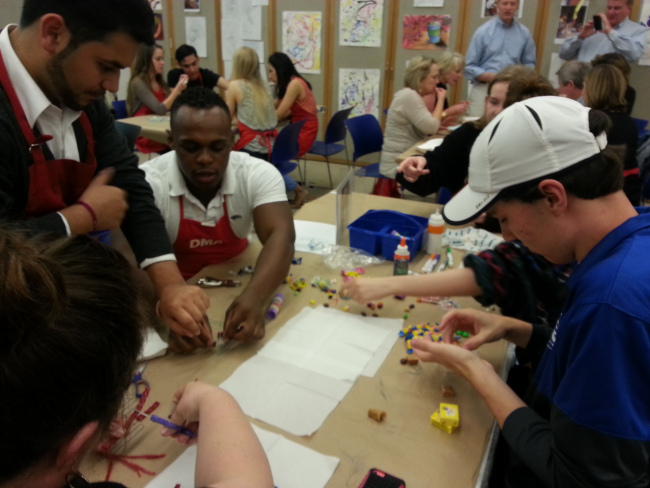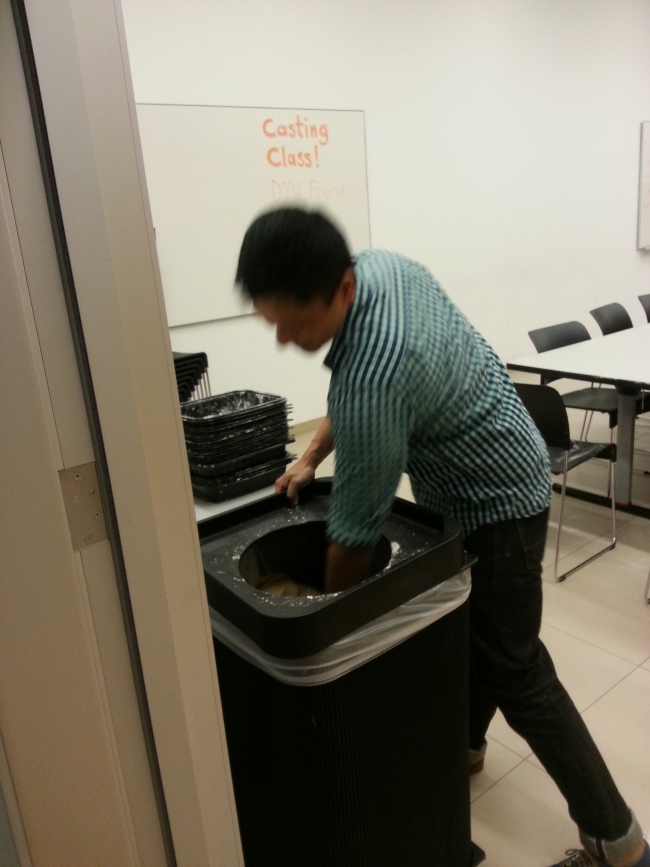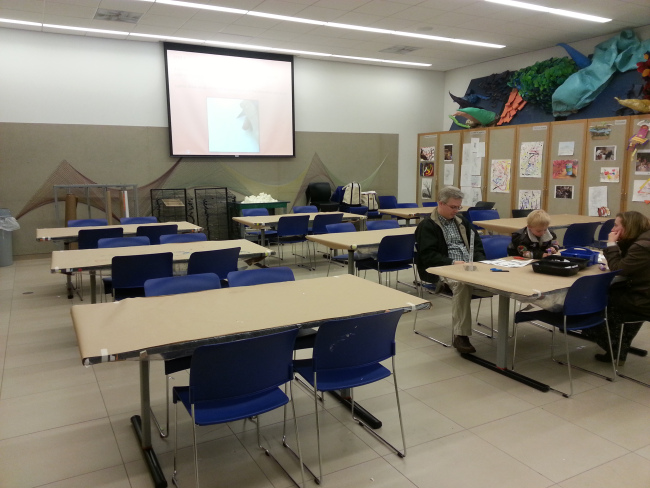Organizing a museum art studio that is used by an entire education department can be truly difficult. It’s important to create a system for everyone to follow in order to avoid a chaotic mess of clutter and confusion! I’ve recently been dubbed the “Studio Fairy” and have been making it my New Year’s goal to implement a workable organization system that everyone in our Department can use.
Turn over a New Leaf in the New Year:
There is no possible way that everyone will understand your method without some gentle reminders. Make labels for everything! Every box, container, or project. Typed is more legible.
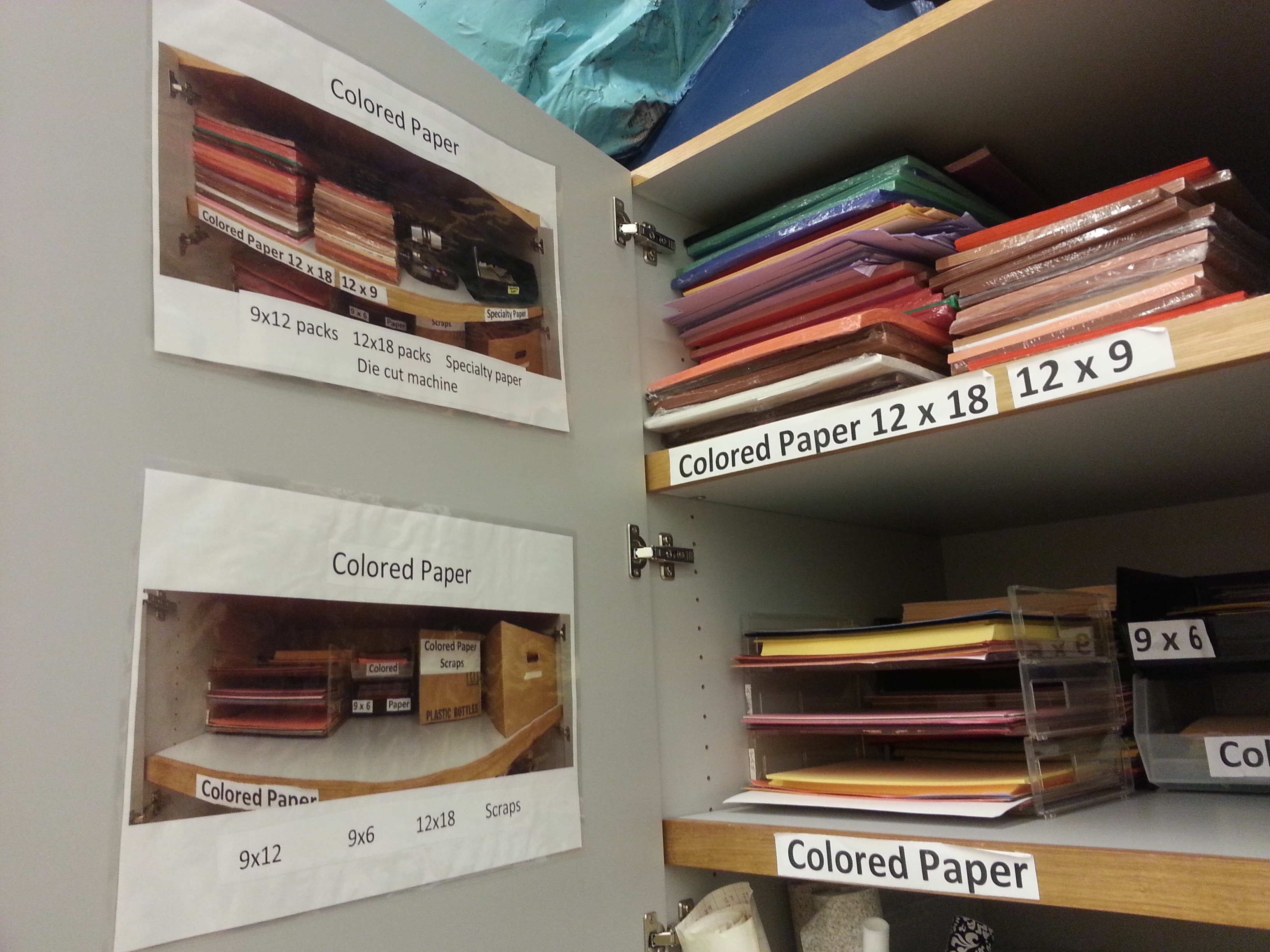
Label your cabinets!
Pictures of where items belong inside cabinets are a great way for everyone to keep the studio organized.
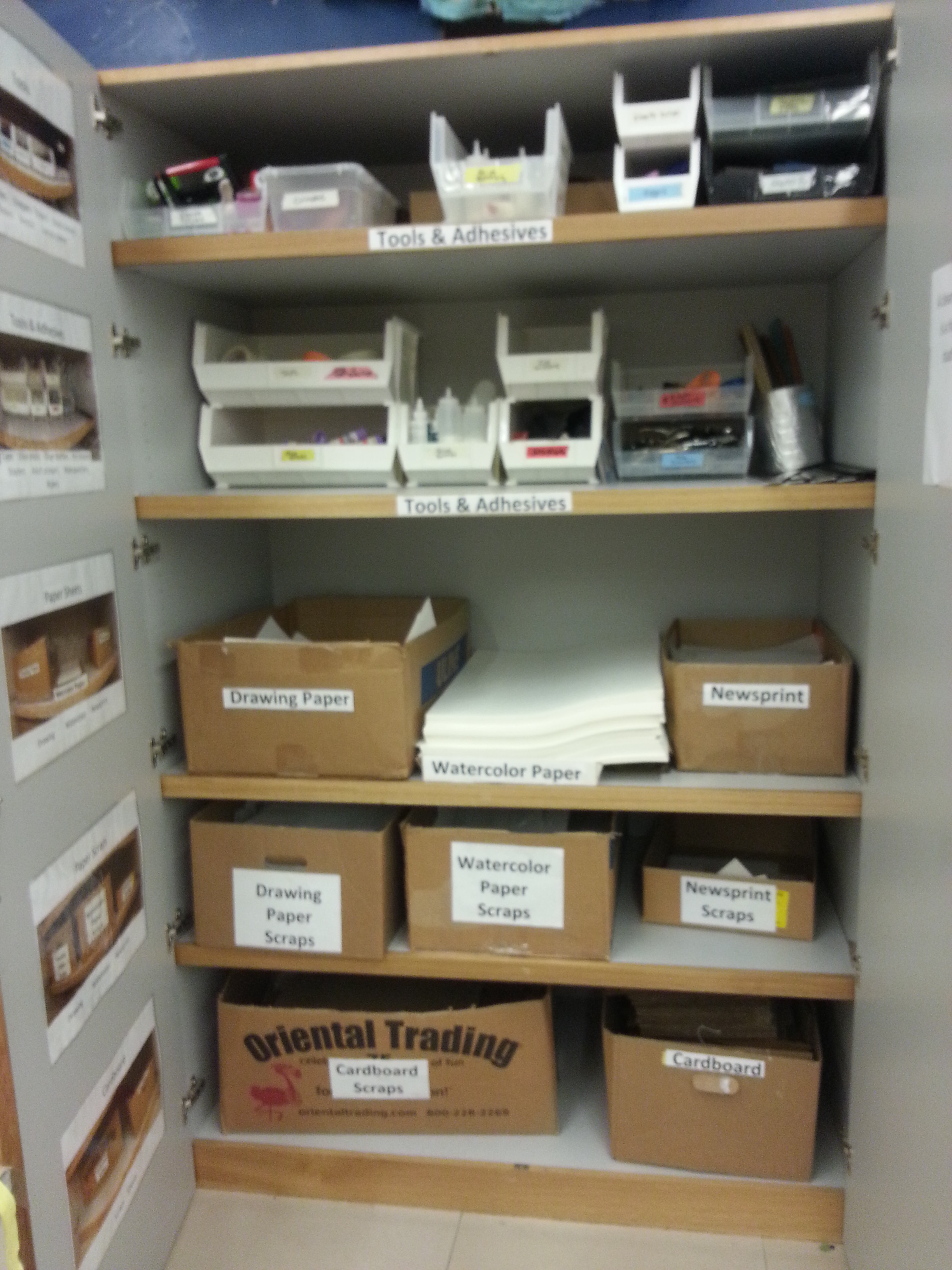
Everyone knows where everything goes!
Kind reminders never hurt. Tack up a few clever sayings around the studio to help.
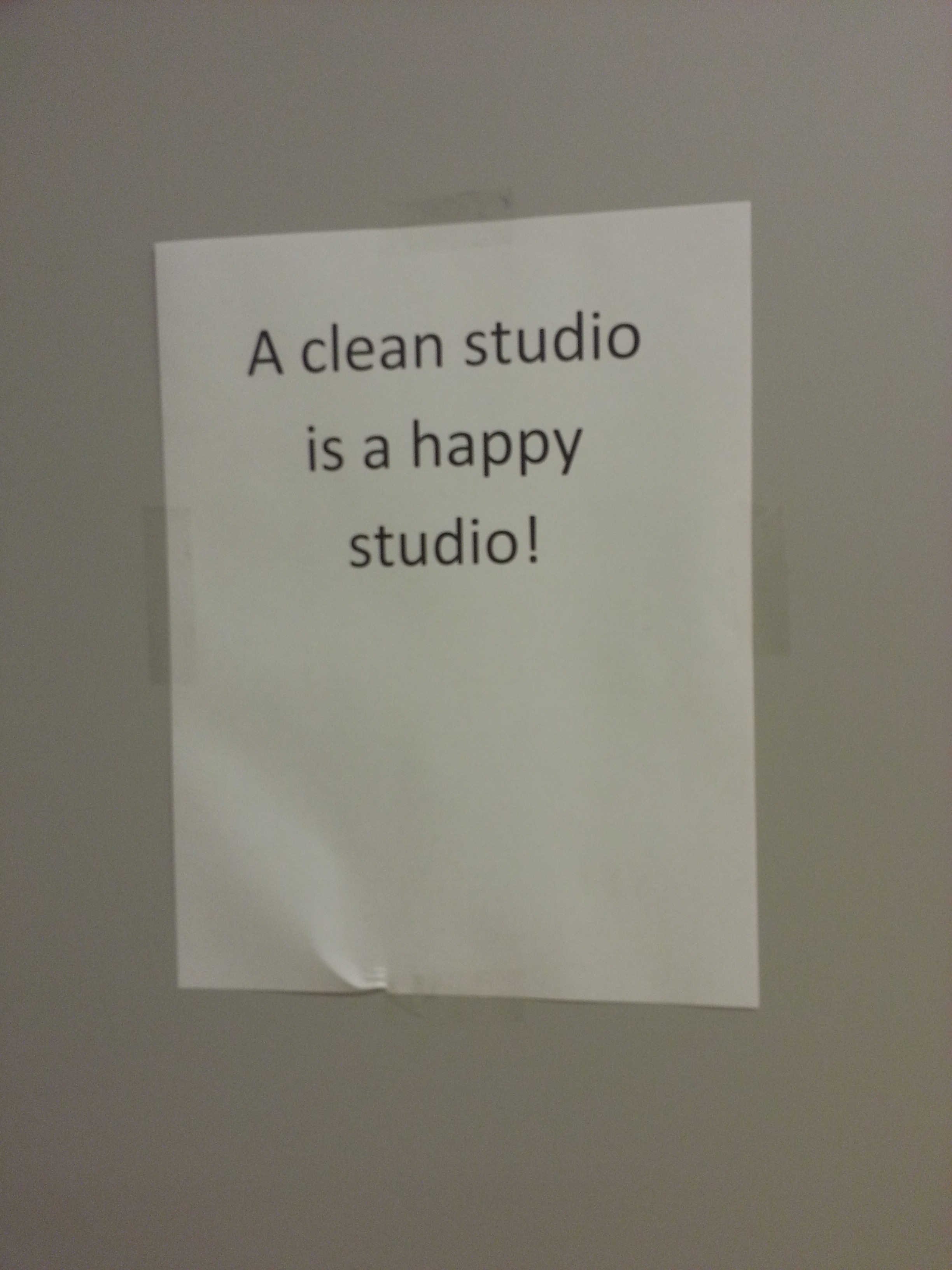
Doesn’t hurt to have reminders
Commit to sticking with it! Like exercise, to get the desired organized results you have to stick with it! And as we all know it is easier to do when everyone is on the same page. Be committed to staying clean and organized this new year! Build time in your schedule each day to place materials back in their nice, cozy home.
Sharing Solutions:
Countless individuals use the C3 Art Studio throughout the week, hosting over thirty programs a month in our space. It was imperative to find a solution for when we need to prepare materials for a workshop. In the past, materials would wander off, be put away randomly or even be thrown out because no one knew what belonged to a particular program and what didn’t. JC Bigornia and I decided we would put an end to the confusion, so we spray-painted our rolling carts with chalkboard paint. Now, staff can write the program and date on the cart and stash their materials safely. If the program has passed, our staff puts all the materials back in their proper place and erases what is written on the cart.
That Darn Emotional Attachment:
Most people attach deep meaning to projects that they’ve spent hours creating and developing. A lot of us are also hoarders to some degree and don’t want to let go of something we may “need” along the way. We can easily be consumed with stuff and become trapped under the weight of sentimentality. I’m not saying be less sensitive—but now with the rise in technology we can easily archive our prized activities, samples, and creations with the click of a camera, or wave of a portable scanner wand (this is on my wish list)! Keep digital folders (backed up), create a Flikr account and say goodbye!
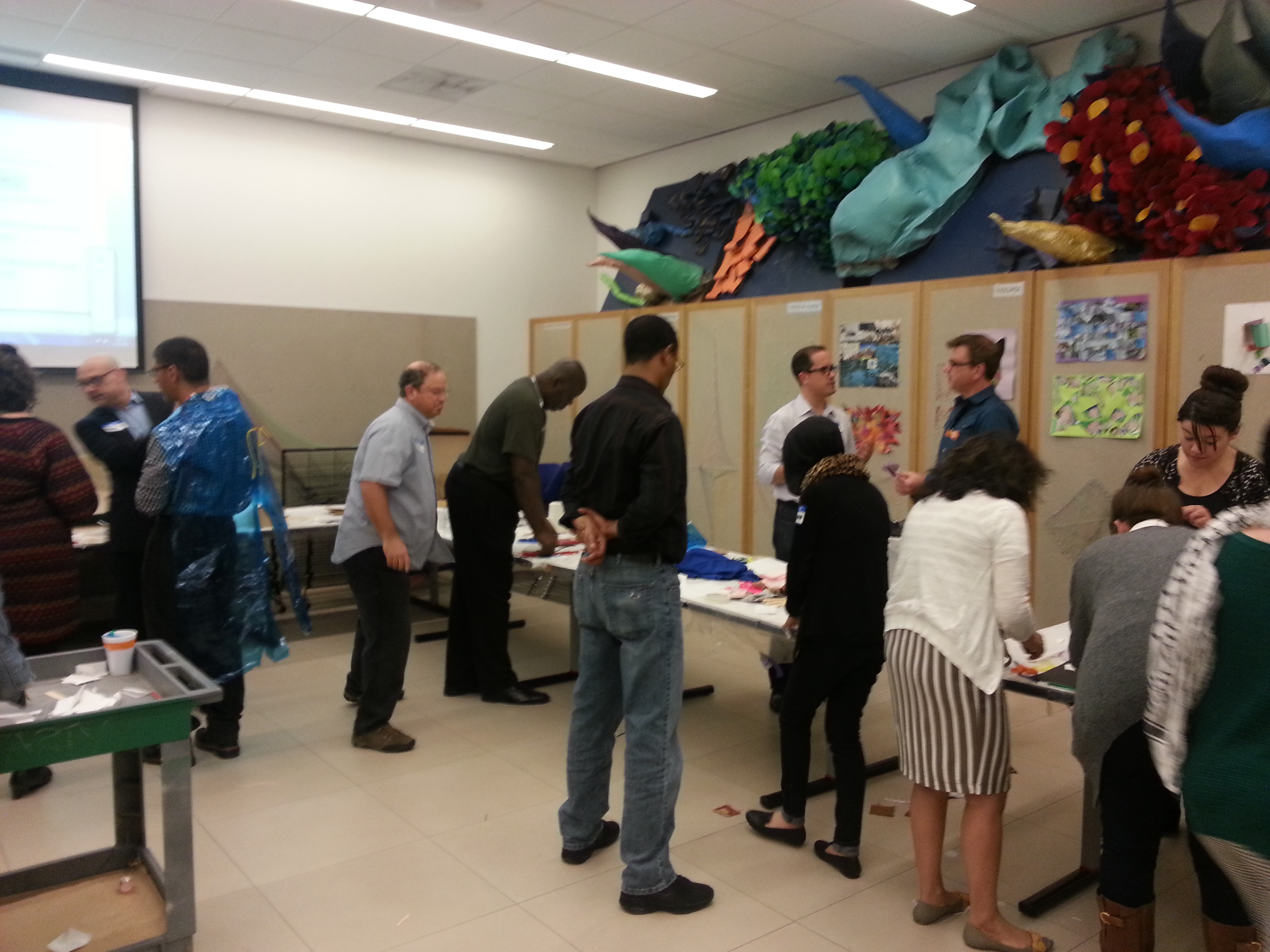
Look at our active studio
Evaluate Need:
There are times when you just have to purge. When tackling a cleaning project or when you are faced with lack of space, you must evaluate what you have. Is it really important to hold on to that never-ending supply of half used scraps of ______ (insert item here)? When the C3 staff did a major clean-out of our basement and art studio we had to make sure we only kept things that served a purpose. Frankly, we had to remove what did not because we were running out of space for the things we did in fact need. We had to ask ourselves the following questions, which are good rules to live by:
- Have I saved this past its life expectancy—or does it smell?
- Does it work? Will it ever?
- Will we really use this?
- Can it be recycled or upcycled?
- Can it be documented and disposed of?
- Will it benefit someone in need? Can this be donated to a local school, community group or a thrift store to be used and loved again?
Stop making excuses for keeping things that you will no longer use!
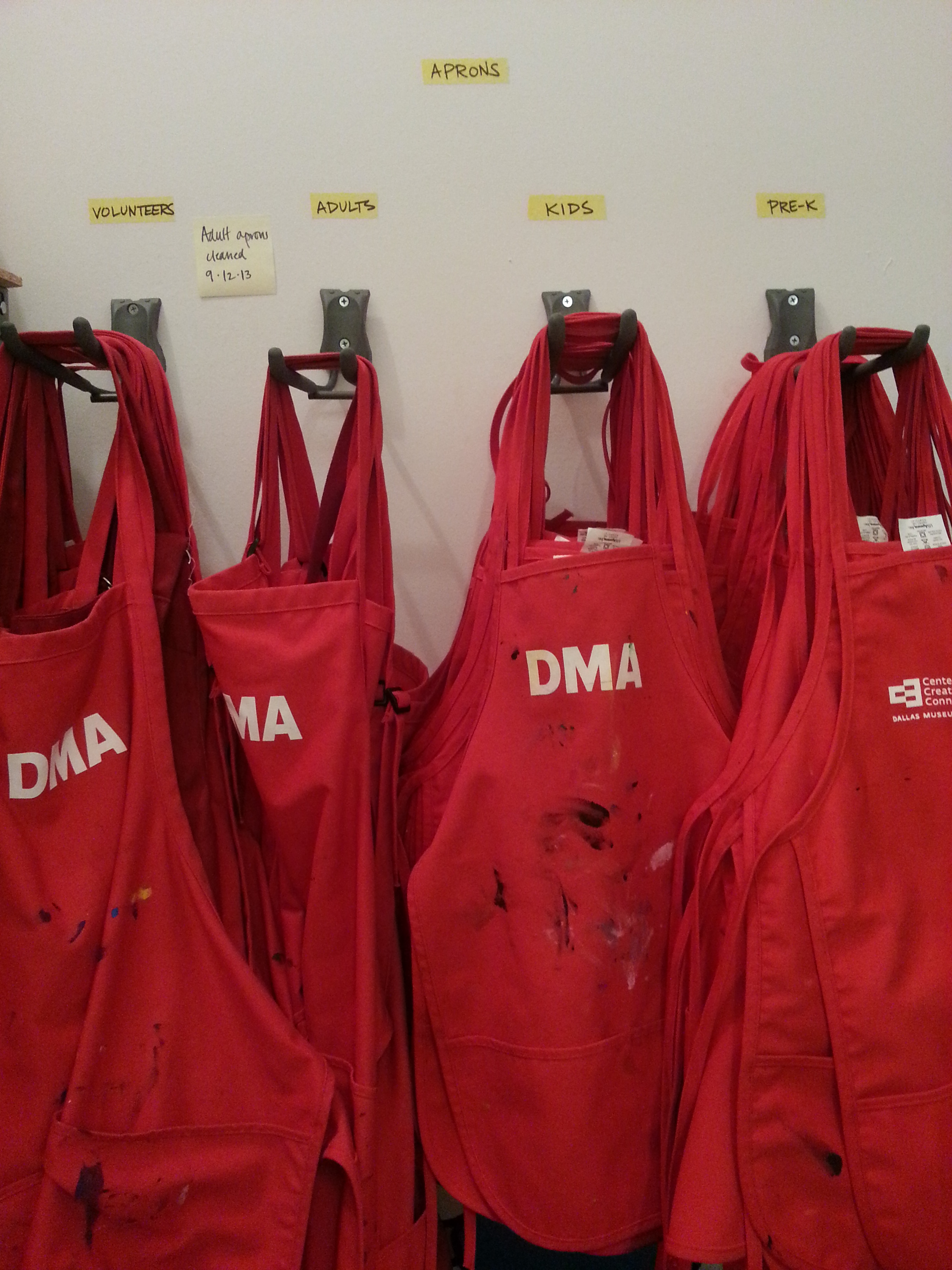
Hang up your aprons so that they are easy to grab when inspiration strikes!
Your Work-Space:
It is very important for those using your space to have a clean work-space and a comfortable, welcoming environment in which to work. The art studio is a place that is supposed to provide people with a feeling of security, as if it was their own studio. Art is very much a product of it’s environment and if the environment is able to inspire, people are more likely to conceive creative thoughts and create rich works of art. We have to maintain a great environment for everyone who enters the space!
Say goodbye to your ways of old! Wishing you luck staying organized in 2014! Remember, it’s about progress, not about perfection!
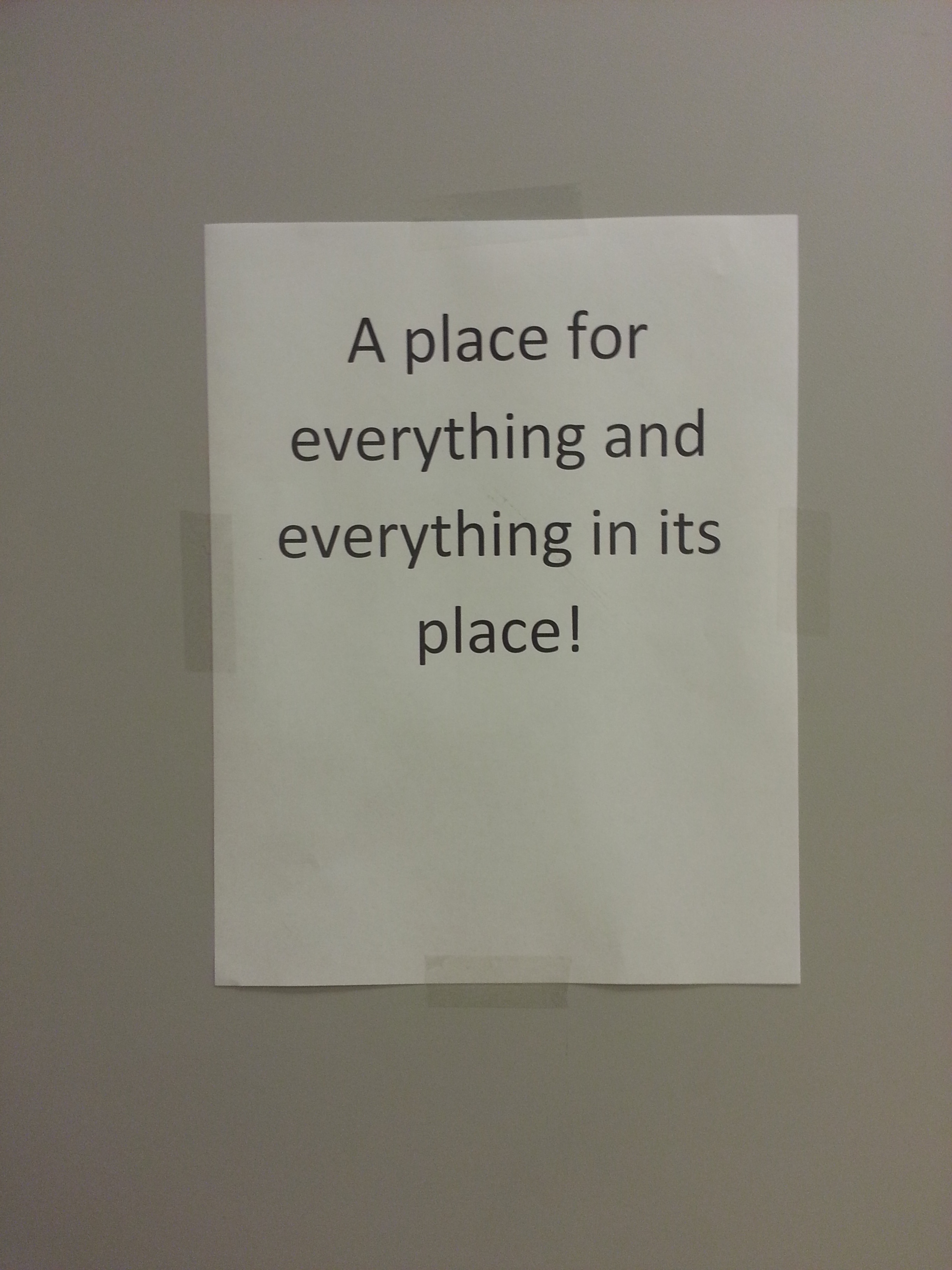
Politeness goes a long way.
Products That Never Fail and Guiding Resources:
- Clear storage boxes that are the size of a shoe box from The Container Store (or Dollar Store) are perfect for seeing beads and baubles!
- We store program supplies under a canvas-lined table in High-Density Polythylene Mail bins. But I do warn you: don’t take these from the post office! These bins are great to store program supplies, easy to stack, and very durable!
- I also really enjoy Packaways Storage Bins, which are plastic bins that collapse, have a wipe-off label and come in fantastic bright colors!
- Laminating machines and label makers help when creating signs for supplies! It always helps to type up the names of the items so there is no confusion—and it’s pleasing to the eye!
- Buy a few extension cord holders. It will save you hours of untangling time!
- We also use craft caddies to keep supplies organized for a variety of programming. These handy, stackable storage options keep things like glue, crayons, scissors and sequins nice and neat!
- Watch this great video from the founder of the Art of Education website.
- Peruse these top twenty-five organizing blogs in your down time.
- Reach this article: Broome, J. L. (2013). A case study in classroom managment and school involvement: Designing an artroom for effective learning. ArtEducation, 66(3), 39-46.
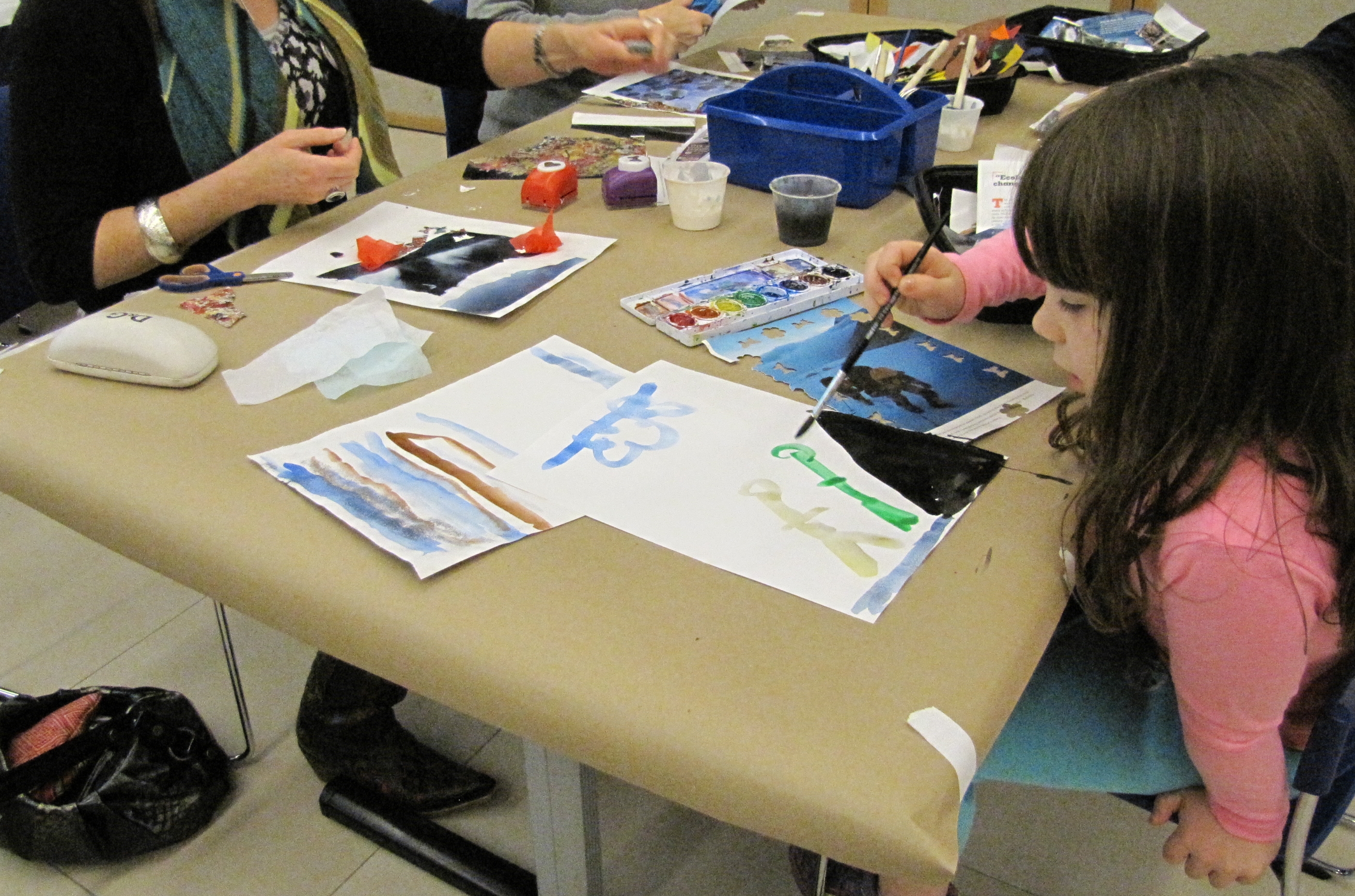
Craft Caddies at work!
We would love to hear your ideas! Send me pictures of your work-space and give us your fantastic tips. Happy New Year and stay tuned for more organization in 2014!
Amanda Batson
C3 Program Coordinator
